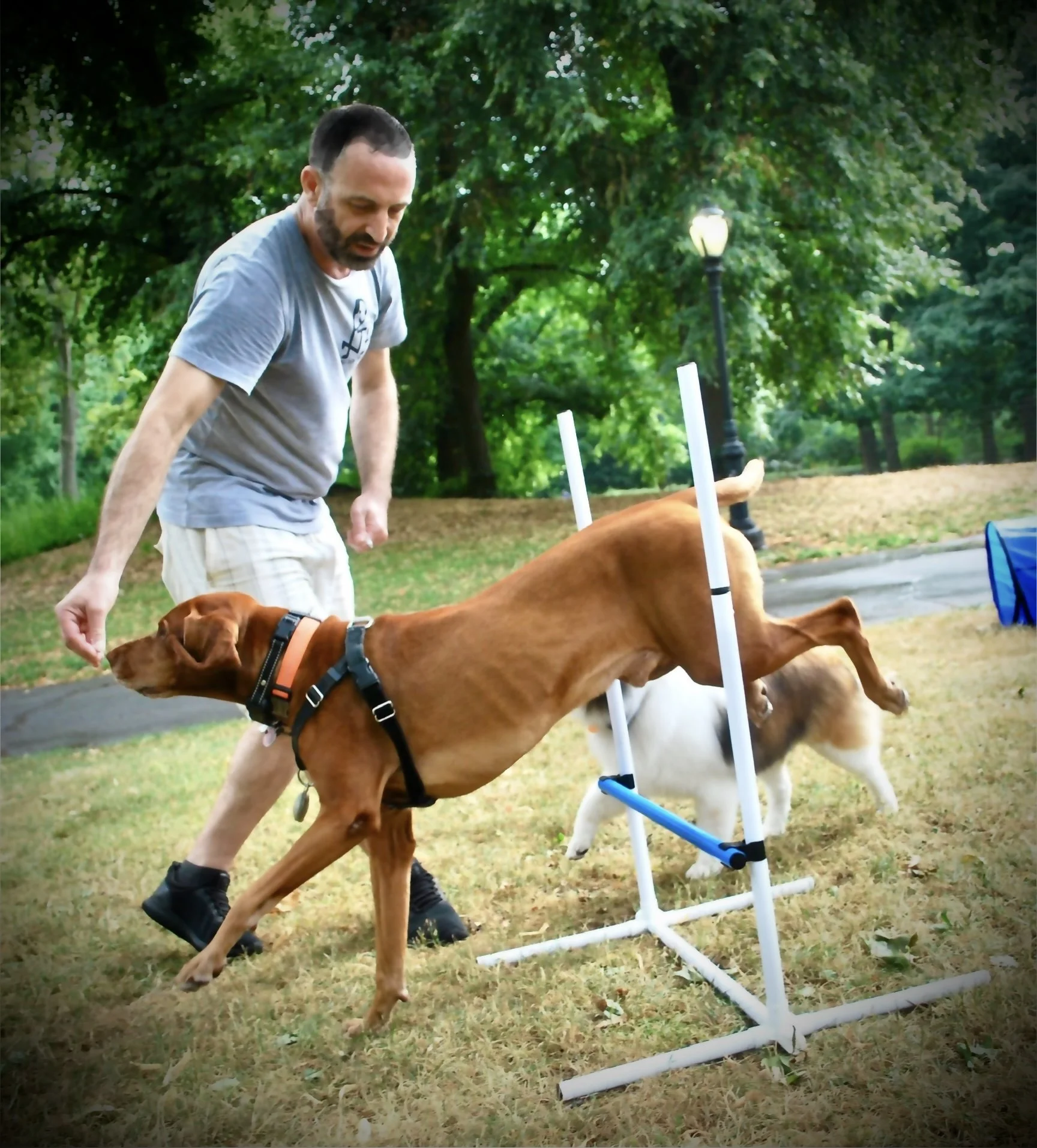Reactive Resilience Therapy™
Harnessing Agility to Transform Reactivity into Confidence
What is Reactive Resilience Therapy™ and How Does it Work?
Reactive Resilience Therapy™ is a structured program designed to help dogs who struggle with reactivity on walks or around other dogs and people. By combining positive behavior strategies with agility-inspired activities, it gives dogs a safe outlet for their energy, builds their confidence, and teaches them how to stay calm in challenging situations. The result is a dog that feels more secure, an owner who feels more in control, and walks that become far less stressful for both.
Key Components
- Detailed behavioral intake, including threshold mapping and reactive triggers.
- Objective metrics (latency to reaction, duration, intensity) recorded across three environments.
- Break down agility sequences into component behaviors (e.g., target touch → tunnel entry → weave poles).
- Use each component at the precise moment of threshold approach to shift focus and build new, desirable behavioral chains.
- Incorporate play cues and reward markers immediately upon completion of each agility component.
- Elevate dopamine release and endorphin flow to create strong, positive associations with formerly aversive stimuli.
- Systematic, graded exposure to reactive triggers paired with low-intensity agility tasks.
- Progressively increase trigger intensity only when the dog reliably completes the preceding behavior chain without reactive signs.
- Sessions 1–2 (Foundation): Agility basics
- Sessions 3–4 (Linking): Introduce reactive stimuli
- Sessions 5–6 (Expansion): Increasing agility skills and trigger proximity
- Sessions 7–8 (Generalization): Transfer skills to novel environments and handlers
Who Should Enroll
- Dogs showing leash- or off-leash reactivity to other dogs, people, or environmental stimuli.
- Owners committed to consistent, science-based training protocols and daily homework.
- Handlers seeking measurable progress, backed by objective data and expert guidance.
Expected Outcomes
- 50–70% reduction in reactive lunges and barking within six weeks (internal trial, n = 12).
- Improved handler timing and technique through clear behavioral markers.
- Enhanced overall confidence and engagement in novel settings.
Next Steps
- Book a 1:1 consultation with our expert team.
- We’ll assess your dog’s behavior, training history, and environment.
- You’ll receive a customized action plan with goals, milestones, and support options.
